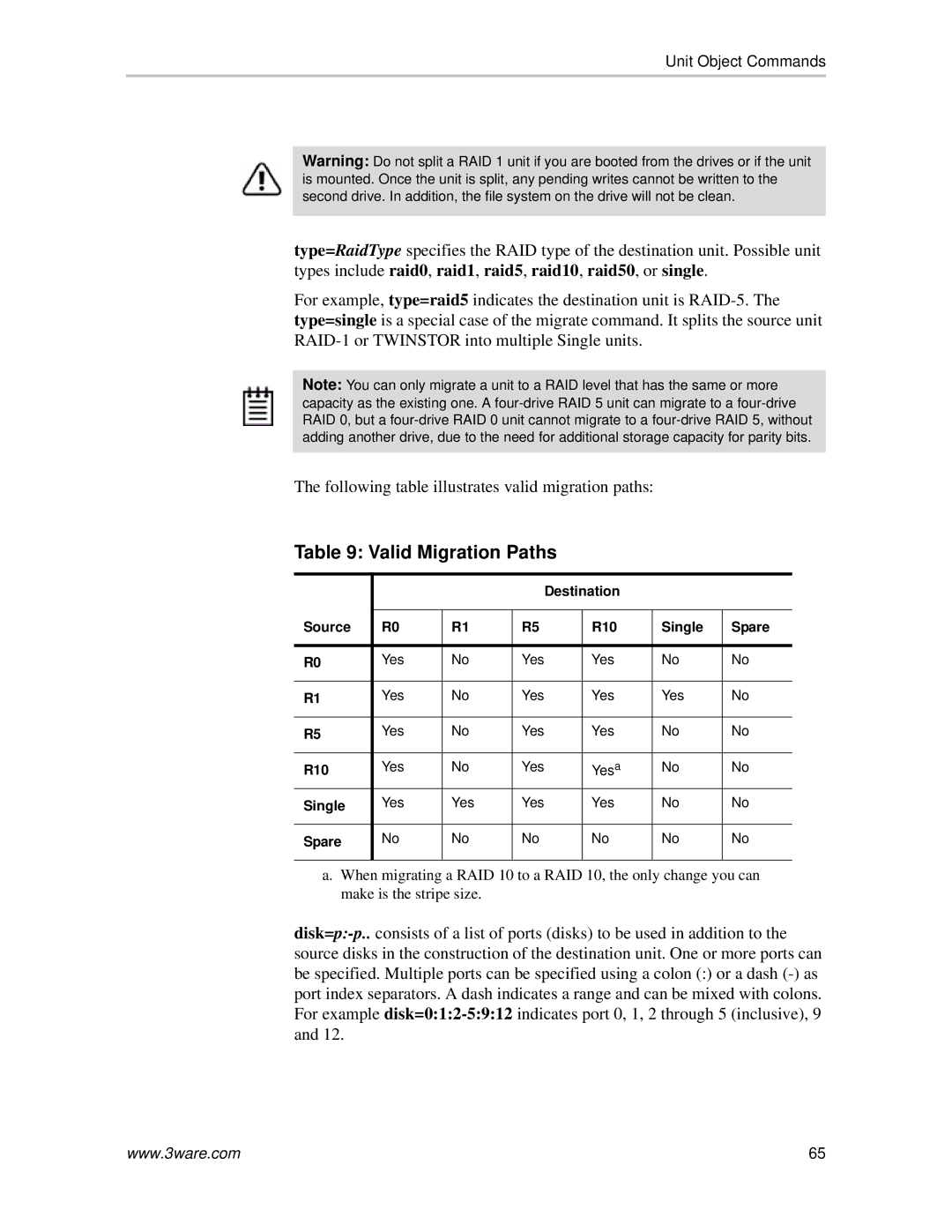
Unit Object Commands
Warning: Do not split a RAID 1 unit if you are booted from the drives or if the unit is mounted. Once the unit is split, any pending writes cannot be written to the second drive. In addition, the file system on the drive will not be clean.
type=RaidType specifies the RAID type of the destination unit. Possible unit types include raid0, raid1, raid5, raid10, raid50, or single.
For example, type=raid5 indicates the destination unit is
Note: You can only migrate a unit to a RAID level that has the same or more capacity as the existing one. A
The following table illustrates valid migration paths:
Table 9: Valid Migration Paths
|
|
| Destination |
|
| |
|
|
|
|
|
|
|
Source | R0 | R1 | R5 | R10 | Single | Spare |
|
|
|
|
|
|
|
R0 | Yes | No | Yes | Yes | No | No |
|
|
|
|
|
|
|
R1 | Yes | No | Yes | Yes | Yes | No |
|
|
|
|
|
|
|
R5 | Yes | No | Yes | Yes | No | No |
|
|
|
|
|
|
|
R10 | Yes | No | Yes | Yesa | No | No |
Single | Yes | Yes | Yes | Yes | No | No |
|
|
|
|
|
|
|
Spare | No | No | No | No | No | No |
|
|
|
|
|
|
|
a.When migrating a RAID 10 to a RAID 10, the only change you can make is the stripe size.
www.3ware.com | 65 |
